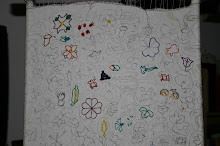My New Quill Article
Why I like the 16th Century More
Constanza de Sevilla
The 16th Century gave us Shakespeare, world exploration, expansion of empires, and (my favorite) the first actual flush toilets.
They were not, however the first toilets in existence. There are records of toilets throughout the world, including one found in a grave in China. Flushing Ancient Egypt’s toilets involved buckets of water instead of having it piped in. Earthenware pipes still in use today drained them. Rome’s sewer system, cloxa maxima, made of stone seats with a hole in the center, was built over channels of water for drainage.
In 1189, London had a sewage system called garderobes. They could be public or private toilets. Private garderobes emptied by pipes into a pit, moat or river immediately outside the building where they were. Public garderobes emptied directly into the Thames, making it smelly and unsanitary.
In 1530, close stools became the most modern convenience. It was simply a chair with a padded seat, handles for travel and a pot that required emptying, often out the window or door. Those who could not afford a close stool used a bucket, cistern or just the street.
Leonardo da Vinci developed plans for water closets for the castle at Ambrose of Francis I, but they were considered nonsense and were never built. These plans included pipes inside the walls and vents that went up to the roof.
In 1596, Elizabeth I’s godson, Sir John Harrington, wrote an article called “Plan Plots for a Privy of Perfection.” Even though his invention worked, it leaked and was poorly ventilated. Sewer gas continuously leaked into the powder room, where the Queen would keep bowls of fragrances and herbs to battle the smell. Elizabeth I was so happy with the invention, that she had a copy of the article bound and hung next to her water closet. So, not only did we see the first toilet, but maybe the first reading material to go along with it. Harrington’s invention was ridiculed, and he never built any more than one for himself and one for the Queen.
http://inventors.about.com/ (search for “history of flush toilets”)
Constanza de Sevilla
The 16th Century gave us Shakespeare, world exploration, expansion of empires, and (my favorite) the first actual flush toilets.
They were not, however the first toilets in existence. There are records of toilets throughout the world, including one found in a grave in China. Flushing Ancient Egypt’s toilets involved buckets of water instead of having it piped in. Earthenware pipes still in use today drained them. Rome’s sewer system, cloxa maxima, made of stone seats with a hole in the center, was built over channels of water for drainage.
In 1189, London had a sewage system called garderobes. They could be public or private toilets. Private garderobes emptied by pipes into a pit, moat or river immediately outside the building where they were. Public garderobes emptied directly into the Thames, making it smelly and unsanitary.
In 1530, close stools became the most modern convenience. It was simply a chair with a padded seat, handles for travel and a pot that required emptying, often out the window or door. Those who could not afford a close stool used a bucket, cistern or just the street.
Leonardo da Vinci developed plans for water closets for the castle at Ambrose of Francis I, but they were considered nonsense and were never built. These plans included pipes inside the walls and vents that went up to the roof.
In 1596, Elizabeth I’s godson, Sir John Harrington, wrote an article called “Plan Plots for a Privy of Perfection.” Even though his invention worked, it leaked and was poorly ventilated. Sewer gas continuously leaked into the powder room, where the Queen would keep bowls of fragrances and herbs to battle the smell. Elizabeth I was so happy with the invention, that she had a copy of the article bound and hung next to her water closet. So, not only did we see the first toilet, but maybe the first reading material to go along with it. Harrington’s invention was ridiculed, and he never built any more than one for himself and one for the Queen.
http://inventors.about.com/ (search for “history of flush toilets”)
Labels: Toilets


<< Home